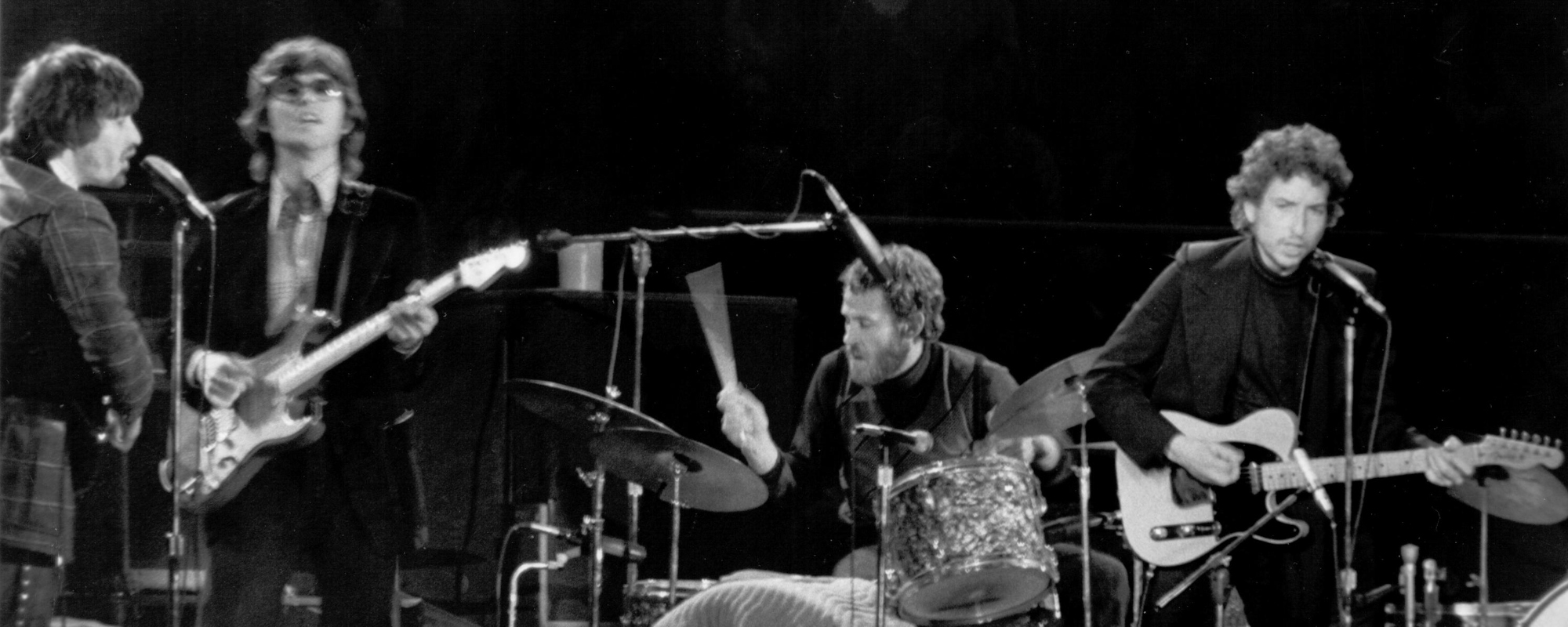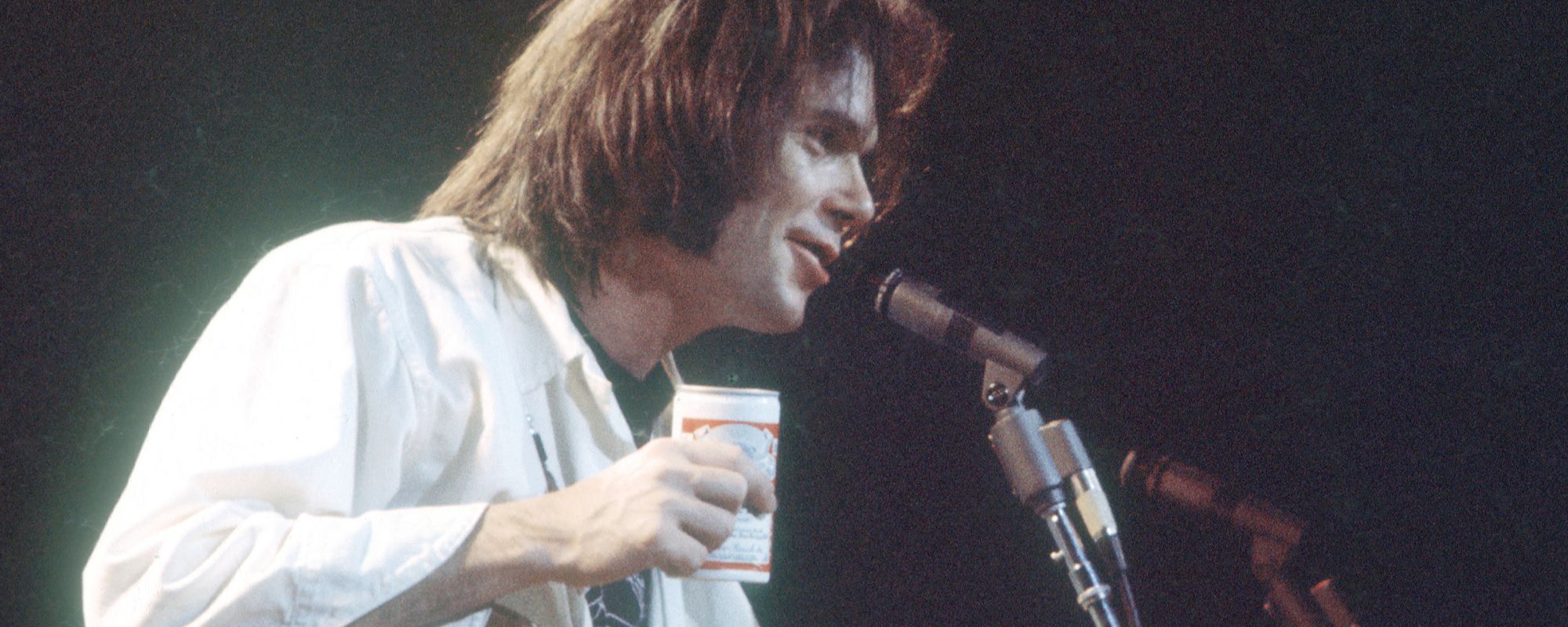Neil Young isn’t an artist who clings to regret, but he’ll admit that there was one part of the iconic CSNY track, “Woodstock,” that he wished he could have changed (or, more accurately, not changed at all). Joni Mitchell originally wrote the song, despite missing the event at her manager’s behest, after hearing her boyfriend, Graham Nash, and his bandmates, Stephen Stills, Neil Young, and Dave Crosby, describe the monumental experience in upstate New York.
Videos by American Songwriter
Mitchell was able to weave their retellings of the historical moment into a haunting, beautiful depiction of the three-day festival, which CSNY later turned into a more rousing rock ‘n’ roll number. The track performed relatively well on the charts, but Young felt one element of the song left much to be desired.
Neil Young Reveals Biggest Regret About CSNY Rendition Of “Woodstock”
Canadian singer-songwriter and folk-rock icon Neil Young has built his entire career on doing exactly what he wants to do, whether that means quitting a tour at the last minute or making an album that seems completely out of left field just to make a point to his record label, á la Everybody’s Rockin’. He summarized his brazen, unapologetic approach to creativity during a 2022 appearance on the Howard Stern Show: “You shouldn’t try. I think you should just let it be. If you’re trying to do something that you think you should be doing, you’ve lost it already.”
Therein lies the crux of his biggest regret about CSNY’s rendition of “Woodstock.” To the audience, the song is a classic retelling of an event that CSNY witnessed first-hand as part of the historical festival’s lineup. It’s a bit funky and a little folky, with just enough rock ‘n’ roll blended in to serve as a transition from the late 1960s into the early 1970s. But once the band started combing over their parts, Young argued that they lost some of the magic of the original recordings.
“Stephen [Stills] sang the s*** out of it,” Young once said, per Dave Zimmer’s book, Crosby, Stills & Nash: The Authorized Biography. “The track was magic. Then, later on, they were in the studio nitpicking. Sure enough, Stephen erased the vocal and put another one on that wasn’t nearly as good.” In Stills’ defense, he said he “replaced one and a half verses that were excruciatingly out of tune.”
To Be Fair, The Singer-Songwriter Was Willing To Accept His Mistakes
Neil Young contributed one of the most iconic parts of CSNY’s rendition of “Woodstock” with his twangy guitar riff in the song’s introduction. Aside from the mesmerizing songwriting and Stephen Stills’ pitch-perfect singing, even if it was to Young’s chagrin, the guitar part in the beginning is an incredibly distinct and memorable part of the song. But as Young explained on the Howard Stern Show, that was a mistake, too. The band wasn’t trying to let him stick out.
On the contrary, Young just came in early. “I was there,” he said with a smile. “We had a good time. I like it.” The band could have re-tracked the song so that everyone came in at the same time. If Young had been willing to pick apart his performance the same way Stephen Stills was willing to pick apart his, that signature introduction might have changed entirely. This likely played a part in Young’s regret about “Woodstock.” There was something about everyone’s initial parts that added a bit of jangly, just-loose-enough magic to the track. “The original vocal was funky…like the guitar was funky,” Young told Stern.
“I didn’t realize until later on, but when I heard the original vocal again, oh, we screwed up. We were trying to be good. We tried. Big bummer. Never should have done that.”
Nevertheless, the version of “Woodstock” that plays on radio stations everywhere today features Stills’ second vocal take, which he overdubbed after the band completed their full-band tracking. Young’s jumped intro still comes in loud and clear, though, proving that sometimes, two artists’ different approaches to the studio can create something even greater than the sum of its parts.
Photo by Jack Robinson/Hulton Archive/Getty Images









Leave a Reply
Only members can comment. Become a member. Already a member? Log in.